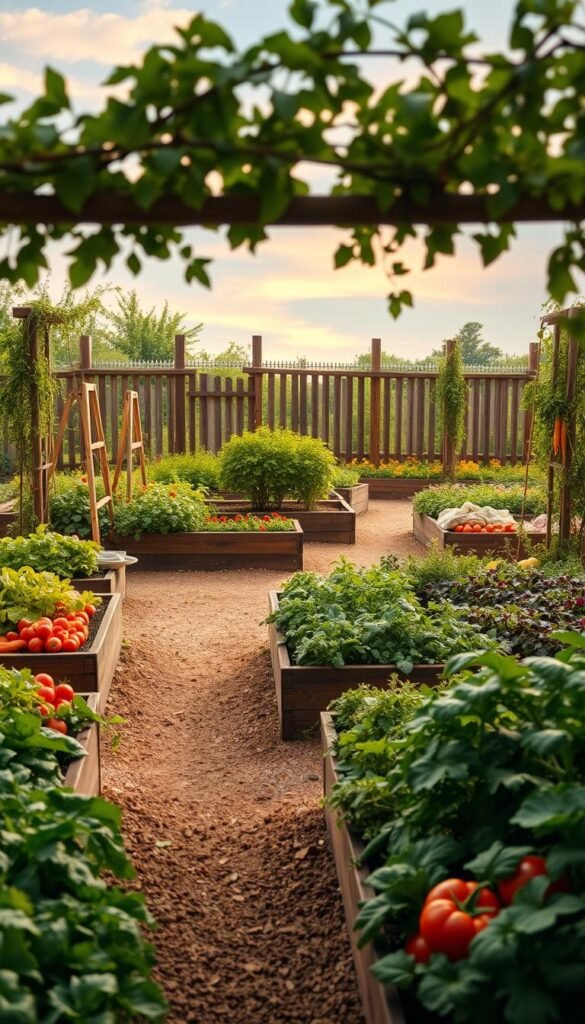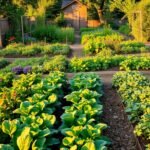Growing fresh food all season long feels like magic, but it’s really about smart design. A well-organized plot keeps your kitchen stocked without overwhelming you with produce. Instead of dealing with a flood of veggies one week and empty beds the next, you’ll enjoy steady pickings from spring to fall.
Success starts with knowing your plants’ rhythms. Some crops sprout fast, while others take months. By mixing quick growers like radishes with slower ones like tomatoes, you’ll fill gaps as seasons change. This dance of timing and spacing turns your yard into a nonstop buffet.
Space matters, but creativity matters more. Even a tiny balcony can host rotating lettuce or herbs. Larger areas let you experiment with companion planting and seasonal swaps. The secret? Treat your garden like a puzzle, where each piece supports the next harvest.
This guide breaks down the steps to build a system that works for you. You’ll learn how to stretch your growing season, pick the right varieties, and arrange beds for maximum yield. Let’s turn sporadic successes into reliable abundance.
Understanding Continuous Harvests in Your Vegetable Garden
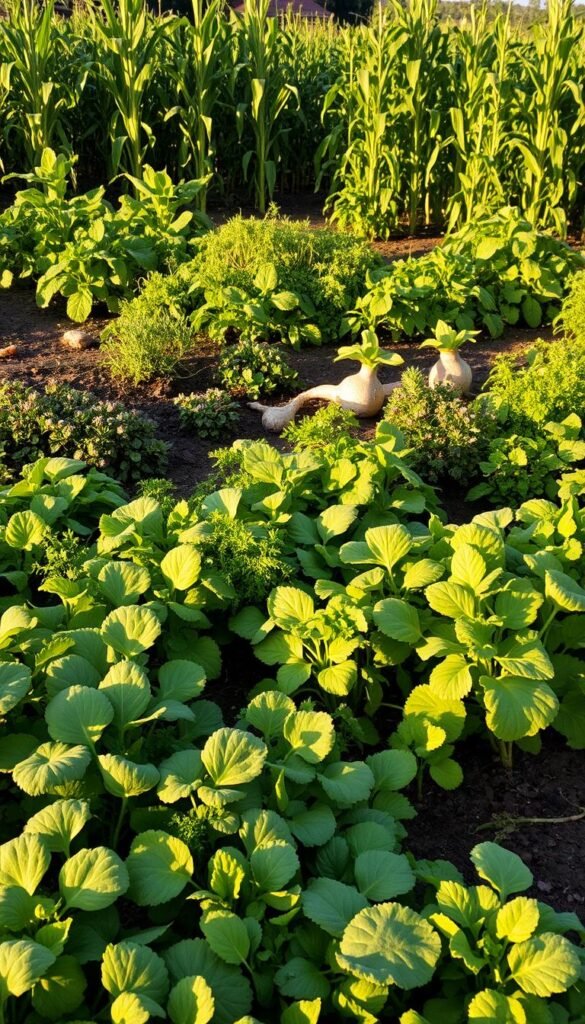
Imagine biting into a sun-warmed tomato in July and crisp kale in October—all from the same patch of soil. Continuous harvests let you enjoy fresh flavors without the boom-and-bust cycle of traditional gardening. This method works like a relay race: as one crop finishes, another takes its place.
Why Staggered Harvests Work Better
Traditional gardens often leave empty spaces after harvesting. With staggered planting, you fill those gaps quickly. Fast-growing crops like spinach mature in 30 days, while slower ones like carrots develop underneath. You’ll pick food weekly instead of waiting months.
| Method | Harvest Pattern | Space Used |
|---|---|---|
| Single Planting | All-at-once yield | 40% idle after harvest |
| Staggered Planting | Weekly pickings | 95% active all season |
Smart Succession Strategies
Try these tricks to keep your garden productive:
- Plant heat-loving crops where early spring greens grew
- Use quick growers like radishes between slow ones like broccoli
- Replace harvested plants with new seeds every 14 days
Succession planting turns your garden into a year-round food factory. You’ll waste less and enjoy more variety. Even small spaces can produce big results with smart timing.
Assessing Your Garden Space and Microclimates
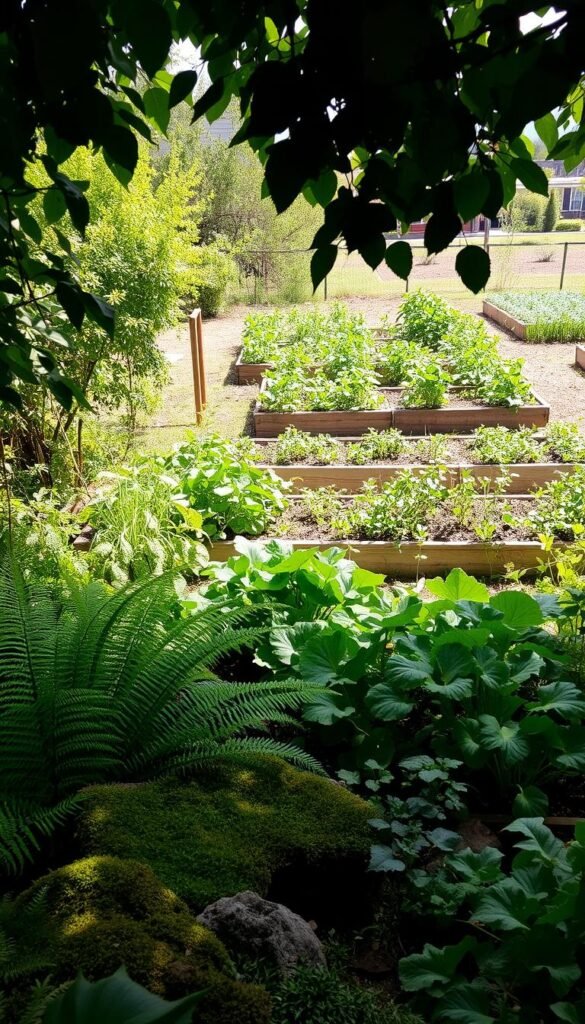
Every square foot of your garden has a story to tell about sunlight and shelter. Understanding these patterns turns guesswork into strategy, letting you match crops to their ideal spots.
Evaluating Sunlight Exposure
Track where light dances across your space using free apps like Sun Surveyor. Watch shadows at 9 AM, noon, and 3 PM for three days. Mark areas that get:
| Light Level | Daily Hours | Best For |
|---|---|---|
| Full Sun | 6-8+ | Tomatoes, peppers, squash |
| Partial Sun | 4-6 | Lettuce, kale, herbs |
| Shade | <4 | Mint, spinach, mushrooms |
South-facing zones soak up the most rays—perfect for heat-loving plants. North sides work better for shade-tolerant greens. Pro tip: Use reflective surfaces like white stones to boost light in dim corners.
Identifying Warm and Cool Zones
Microclimates create hidden growing opportunities. Feel your soil—areas near brick walls warm up first in spring. Low spots stay frosty longer but excel in summer heat.
“A south-facing slope can give you 2 extra growing weeks compared to flat ground.”
Wind patterns matter too. Shield tender plants with tall crops like corn on windy edges. These small adjustments help you stretch your harvest calendar without extra work.
Preparing Your Garden Soil for Optimal Growth
Healthy soil acts like a bustling marketplace where roots trade air, water, and nutrients with billions of microbes. Getting this underground economy thriving lets your crops flourish through multiple growing cycles.
Decoding Your Dirt’s Secrets
Start with a $15 test kit from your local garden center. These kits measure pH and key nutrients like nitrogen and phosphorus. Most vegetables thrive at 6.0-7.0 pH – too acidic, and plants can’t absorb minerals; too alkaline, and growth stalls.
| Soil pH | Plant Impact | Fix Options |
|---|---|---|
| Below 6.0 | Stunted growth | Add lime |
| 6.0-7.0 | Ideal absorption | Maintain |
| Above 7.0 | Nutrient lockout | Add sulfur |
Feeding the Underground Workforce
Clay-heavy or sandy soils need organic upgrades. Mix 3 inches of compost into beds each season – it improves drainage while holding moisture. Pro tip: Fall amendments let materials break down before spring planting.
- Compost: Boosts microbial activity
- Aged manure: Adds slow-release nitrogen
- Leaf mold: Improves water retention
Test every 2-3 years to track progress. Your plants will reward you with bigger yields and faster regrowth between harvests.
How to Plan a Vegetable Garden Layout for Continuous Harvests

Transforming empty ground into a thriving food factory begins with smart spatial decisions. Your growing area should match both your ambitions and available time—start small to build confidence. A 4×8-foot bed yields 32 square feet of productivity while keeping maintenance manageable.
Key Elements in Garden Design and Timing
Strategic arrangements make daily care easier. Place tall crops like pole beans on the north side to avoid shading shorter plants. Leave 18-inch paths between beds for comfortable kneeling and tool access.
| Plot Size | Maintenance Time | Weekly Yield |
|---|---|---|
| 4×8 ft | 2-3 hours | 8-12 lbs |
| 10×10 ft | 5-7 hours | 20-25 lbs |
Time your plantings like a concert conductor. Sow quick-growing radishes between slow-maturing cabbage, harvesting the first crop before the second needs room. Vertical structures double your space—train cucumbers up trellises to free ground area for leafy greens.
Rotate crops annually using this simple pattern: fruits → roots → leaves → legumes. This prevents soil exhaustion while confusing pests. Pro tip: Mark planting dates on your garden map to visualize succession gaps.
Compact spaces thrive with intensive methods. Try hexagonal spacing for lettuces or stack pots of herbs on stair-step shelves. These tricks let you grow 30% more food without expanding your footprint.
Choosing the Right Vegetables and Succession Planting Strategies
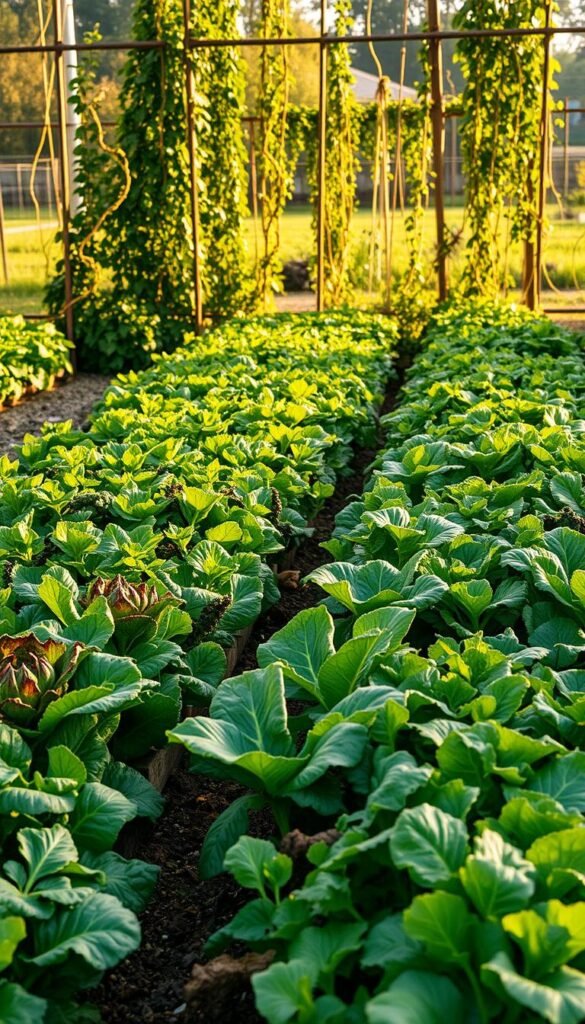
Your garden’s productivity hinges on pairing the right plants with smart timing. Quick-growing varieties fill gaps between longer-term crops, creating a seamless flow of fresh picks. Succession planting works best when you balance speed demons with steady producers.
Selecting Fast-Maturing Crops
Radishes and leafy greens are your garden’s sprinters. These vegetables complete their life cycle in 25-40 days, letting you replant every 14 days. Try these high-speed options:
- Lettuce mixes: Harvest outer leaves for 6+ weeks
- Baby spinach: Ready in 30 days for quick salads
- Bush beans: Produces pods in 45 days
Stagger plantings every two weeks to avoid feast-or-famine cycles. Pro tip: Use fast crops as living mulch between tomato plants early in the season.
Integrating Cool- and Warm-Season Vegetables
Cool-season stars like kale thrive in spring and fall. When summer heat arrives, replace them with peppers or cucumbers. This seasonal tag-team keeps beds productive. A typical rotation might look like:
- March: Sow peas and lettuce
- May: Plant tomatoes after greens finish
- August: Seed fall carrots where garlic grew
Check seed packets for “days to maturity”—this determines which crops fit your growing window. Determinate varieties work best for succession, as they produce one concentrated harvest before making room for new plantings.
Designing Efficient Garden Layouts: Raised Beds, Containers, and Rows
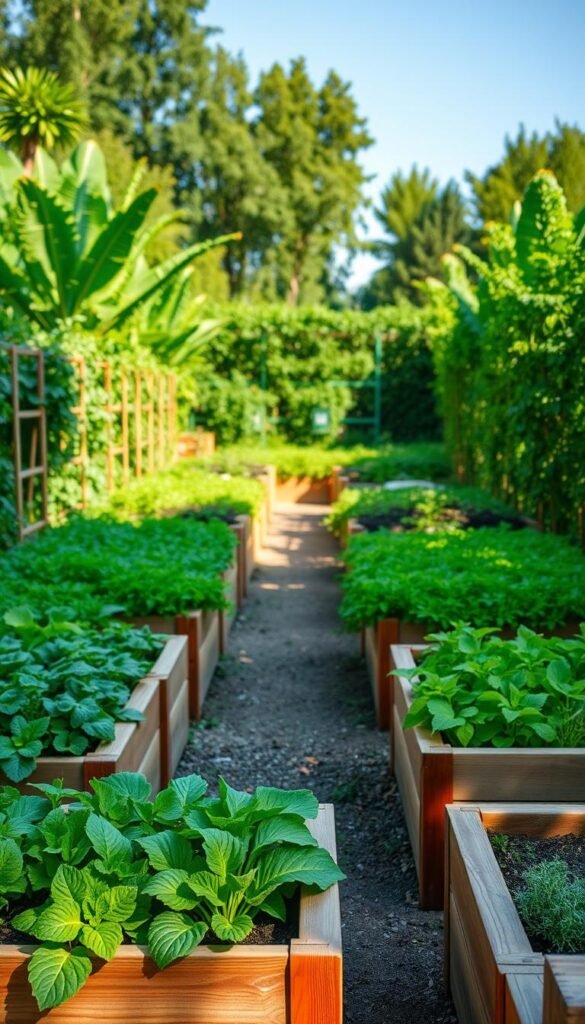
Smart spatial arrangements turn limited areas into productive powerhouses. Raised beds shine here—they let you control soil quality while improving drainage. These structures warm faster in spring, giving crops like peas a 2-week head start.
Keep beds 3-4 feet wide to reach plants without stepping on soil. This width prevents compaction, letting roots breathe. Multiple beds create natural zones for crop rotation. Try this setup:
| Bed Count | Harvest Potential | Maintenance Time |
|---|---|---|
| 2 beds | 12-15 lbs weekly | 3 hours/week |
| 4 beds | 25-30 lbs weekly | 5 hours/week |
Containers offer mobility when ground space falters. Move pots of basil to chase sunlight or shield lettuce from midday heat. Pro tip: Use fabric grow bags for root crops—they air-prune roots naturally.
Reach New Heights with Vertical Systems
Double your yield without expanding horizontally. These space-saving tricks work wonders:
- Train pole beans up cattle panel trellises
- Hang strawberry towers from south-facing walls
- Stack herb planters on tiered shelves
Vertical structures create shade for heat-sensitive plants below. A cucumber-covered arch protects tender spinach seedlings in summer. Rotate crops between levels to balance light exposure through seasons.
Implementing Crop Rotation and Companion Planting
Your garden thrives when plants work as a team. Strategic partnerships below and above ground keep soil lively and pests confused. These two methods form nature’s blueprint for sustainable abundance.
Why Crop Rotation Matters
Repeating the same crops in one spot invites trouble. Diseases like fusarium wilt linger in soil for years, waiting to attack vulnerable plants. Rotation breaks this cycle while balancing nutrient demands.
| Plant Family | Common Crops | Rotation Interval |
|---|---|---|
| Nightshades | Tomatoes, peppers | 3-4 years |
| Brassicas | Kale, broccoli | 2-3 years |
| Legumes | Beans, peas | 1-2 years |
Legumes fix nitrogen, making them perfect predecessors for leafy greens. Heavy feeders like corn follow with boosted soil fertility. Pro tip: Track rotations using a simple square foot garden map divided into zones.
Powerful Plant Partnerships
Companion planting turns neighbors into bodyguards and nutrient sharers. Try these proven pairs:
- Basil + tomatoes: Repels hornworms while enhancing flavor
- Marigolds + cucumbers: Deter beetles with root secretions
- Carrots + onions: Mask each other’s scent from pests
The classic Three Sisters trio demonstrates mutual support: corn stalks become bean poles, beans add nitrogen, and squash leaves suppress weeds. These partnerships let you grow more in less space while reducing chemical interventions.
Creating a Detailed Seasonal Planting Calendar
Your garden’s success hinges on timing, not just sunlight and water. A thoughtful calendar acts as your roadmap, aligning plant needs with nature’s rhythms. Start by noting your region’s last frost date and working backward—this reveals your prime planting windows.
Spring Planting Tips for Early Harvests
Cool-season crops like spinach and peas thrive in chilly soil. In regions like central Iowa, plant these as soon as the ground thaws. Protect seedlings with row covers during late frosts. For continuous greens, sow lettuce every 14 days until summer heat arrives.
Scheduling Succession Planting Throughout the Year
Replace harvested crops with new seeds within 48 hours. After spring radishes finish, plant bush beans for summer. When tomatoes fade, switch to fall carrots. Use a seasonal planting schedule to track these transitions effortlessly.
Most vegetables need 45-75 days to mature. Pair quick growers like arugula (21 days) with slower ones like Brussels sprouts (100 days). This staggered approach keeps your kitchen stocked while beds stay productive. Local extension offices offer free calendars tailored to your climate—tap into these resources for precision timing.
